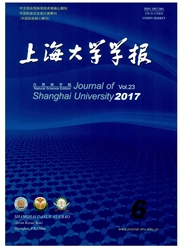

 中文摘要:
中文摘要:
猫跳河梯级水库自20 世纪90 年代起频繁出现季节性突发污染事件. 选择位于猫跳河干流的百花水库作为研究对象, 对其水温、溶解氧(dissolved oxygen, DO)浓度、营养盐浓度进行了为期12 个月的连续监测. 通过分析水库垂直剖面方向上水温及DO 浓度的季节变化趋势, 验证了水体季节性分层现象是导致突发水质恶化的主要原因. 引入水质分析模拟程序(water quality analysis simulation program, WASP) 对水温、DO 浓度、NH+ 4 浓度进行模拟, 模拟结果与监测值季节变化趋势吻合, 证明该模型可以应用于百花水库的水质模拟. 利用WASP 对水库进行了流量调度模拟. 结果表明, 进行有效的季节性水量调控可以达到改善该水库季节性缺氧状况的目的.
 英文摘要:
英文摘要:
Since the 1990s, seasonal emergency of water pollution has occurred frequently in reservoirs on Maotiao River. To understand the mechanism of water quality deterioration, the investigation of Baihua Reservoir was carried out from July 2007 to June 2008. Water temperature, dissolved oxygen (DO) and nutrients were monitored once a month. The water quality analysis simulation program (WASP) was used to simulate water temperature, DO and NH+ 4 . Simulation results fitted well with the monitoring values, indicating applicability of the model. Furthermore, the inflow of the reservoir was regulated within the model. The result shows that efficient seasonal flow regulation plays an important role on the improvement of DO level in the seasonal oxygen-deficiency period.
 同期刊论文项目
同期刊论文项目
 同项目期刊论文
同项目期刊论文
 期刊信息
期刊信息
